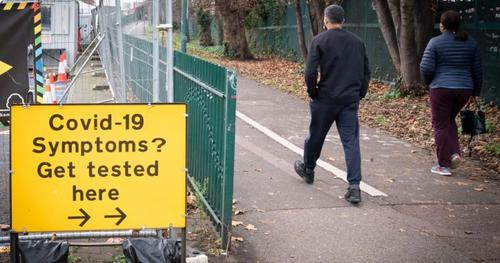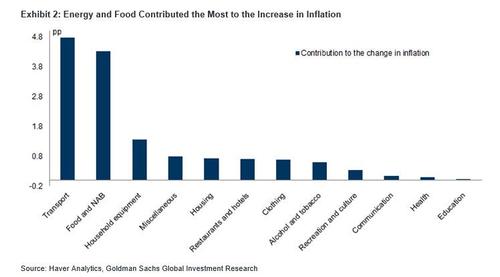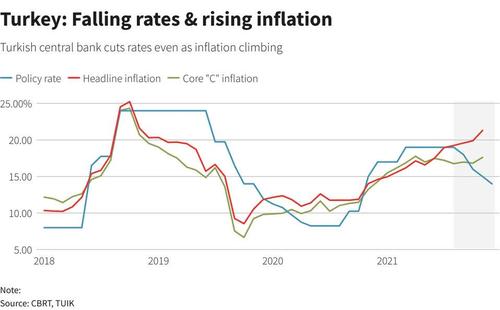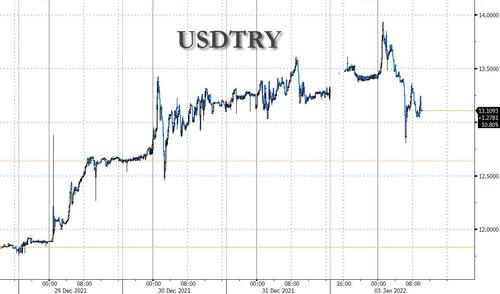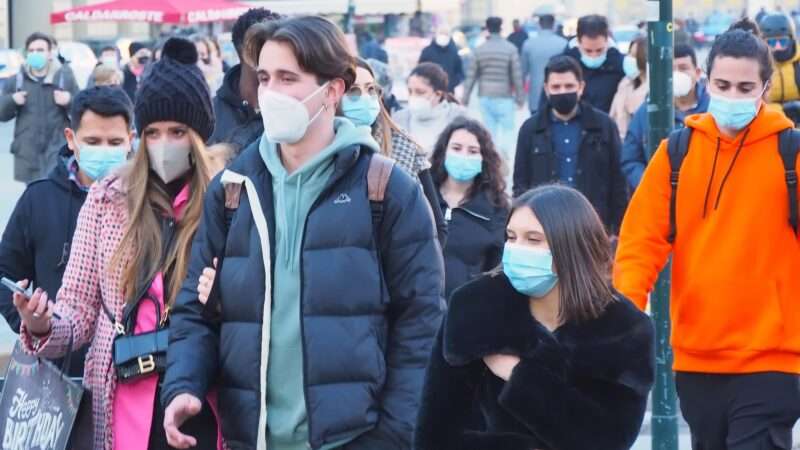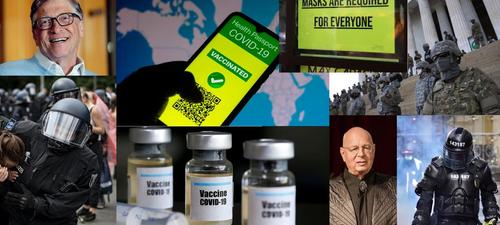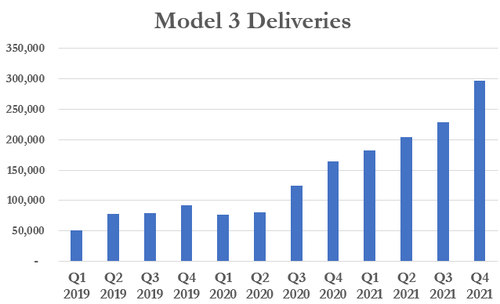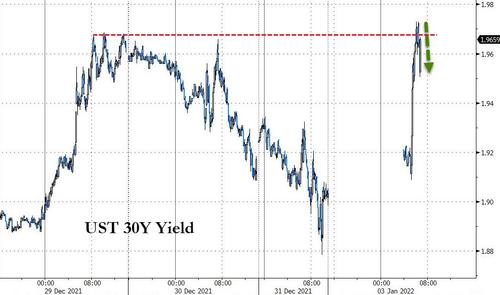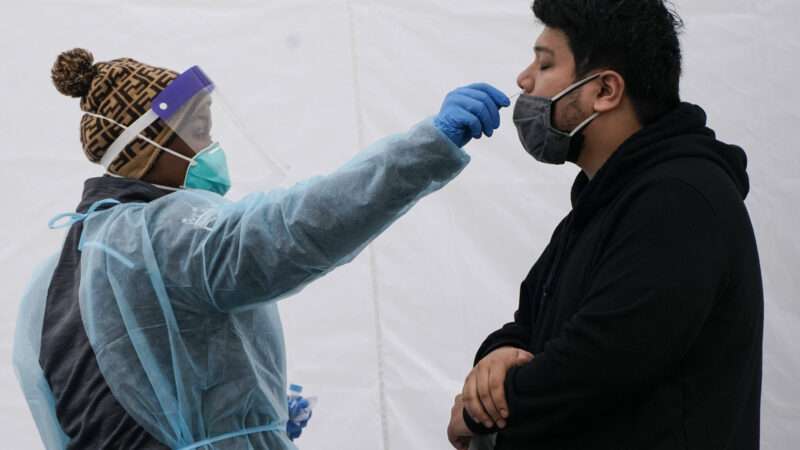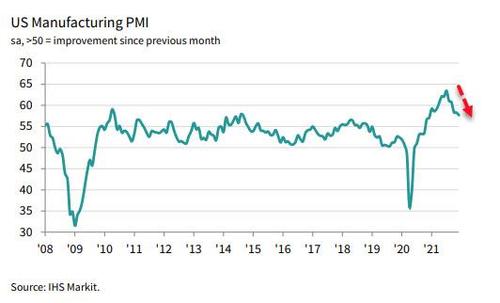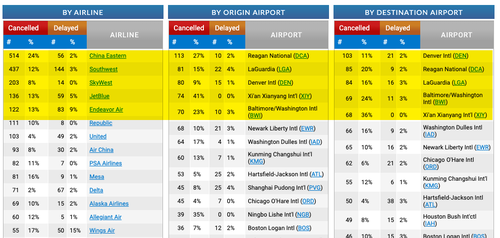Trust the experts? If the pandemic were high school, we’d be juniors by now. Yet the fact that we’ve entered our third calendar year of full-blown pandemic—yes, technically it started in 2019, but the World Health Organization declared it a pandemic in 2020—feels surreal and almost unbelievable. While a lot has changed since early 2020, many things remain stubbornly and depressingly similar.
Schools are still closing without much warning, plagued by both politics and logistics. COVID-19 tests are still hard to come by. We’re still arguing about how to keep people in jails and prisons safe. Shows and festivals are once again shutting down. Hospitals are being overwhelmed. Flights are getting canceled.
And public health officials still can’t get it together. Their guidance is slow-moving, prone to flip-flopping, and weird, often out of line with scientific best practices, practical behavior, or both.
Take the latest from the U.S. Centers for Disease Control and Prevention (CDC), which since the start of the pandemic has been providing a master class in how to confuse the American public. For a long time, the agency recommended that Americans who test positive for COVID-19 quarantine for 10 days.
We now know that most infected people are not contagious for that long—here’s a great thread about testing and contagiousness that elaborates on this. Which means that officials have been asking many people to disrupt their lives for days longer than is necessary.
We’ve known this for a while. So, last week—finally—the CDC shifted course from its 10-day recommendation, saying five days of isolation were sufficient.
“People with COVID-19 should isolate for 5 days and if they are asymptomatic or their symptoms are resolving (without fever for 24 hours),” the updated CDC guidance says. “The change is motivated by science demonstrating that the majority of SARS-CoV-2 transmission occurs early in the course of illness, generally in the 1-2 days prior to onset of symptoms and the 2-3 days after.”
Great, right?
Welllllll…kind of. The agency forgot to include in its advice one important step: a negative COVID-19 test. Meanwhile, it did include some scientifically dubious (or at least incomplete) advice.
The CDC says infected people should follow isolation with “5 days of wearing a mask when around others to minimize the risk of infecting people they encounter.” But cloth masks, no matter how well-fitting, likely aren’t enough to stop transmission. Even common surgical masks may not do that; for effective mitigation, N95 masks are where it’s at. Still, officials refuse to say much about what types of masks people should wear, instead preferring the simple but potentially dangerous message that general masking is protective. This gives people a false sense of security and—if they’ve read much about transmission and masking—makes the agency seem scientifically unreliable.
Meanwhile, something that actually is consequential for determining—and stopping—potential contagiousness is whether a rapid antigen test comes back negative. Yet this was left out of the CDC’s updated advice last week.
Now, top White House COVID-19 adviser Anthony Fauci says the CDC is considering updating its recommendation to say that a five-day isolation period and a negative rapid test are recommended.
The paucity of rapid tests in America may explain why the CDC didn’t put that in its new guidance already. Unlike in Europe, rapid tests here remain hard to come by and relatively expensive. And why? Once again, we can blame the federal government. The U.S. Food and Drug Administration has been painfully slow to approve new rapid tests.
Regardless of why the CDC didn’t recommend testing before ending isolation, the result is once again making the agency appear wavering and unsure.
The oversight—and potential correction—marks the latest in a line of questionable CDC guidance, regarding everything from how the virus spreads to masking to what to do if you are infected. Since the start of the pandemic, messaging from the CDC and other government actors has been confused and confusing. At every step, it seems the agency has managed to undermine public confidence or put politics over clarity.
Is it any wonder many Americans aren’t keen to simply “trust the experts” anymore?
(If you’d prefer to end on a more positive note, here’s The New York Times with some ways that this point in the pandemic is not the same as two years ago and some reasons for hope.)
FREE MINDS
The conspiracy theory spiral. In two new studies, researchers found that “increases in conspiracy beliefs predicted subsequent increases in conspiracy beliefs, suggesting a self-reinforcing circle,” write researchers in the journal Personality and Social Psychology Bulletin.
FREE MARKETS
The student loan forgiveness debate is raging again. In his newsletter, Matthew Yglesias—who formerly supported such action—makes good arguments against this plan:
The economy is not depressed, and instead the Federal Reserve is pivoting to fight inflation. That means student loan forgiveness in 2022 is a purely distributive issue — one that will shift resources from the majority of Americans with no student loan debt to the minority of Americans who have it.
Both the debtors and the non-debtors are highly heterogeneous groups, but it’s pretty clear that the non-debtors are both more numerous and poorer on average.
So while there are certainly lots of individual cases where debt relief sounds like an appealing idea, under the current circumstances the case for broad debt relief has become extremely weak. There’s basically no other situation in which progressives would talk themselves into this kind of idea, which is currently being propped up with some very odd math about the racial wealth gap.
But I’d also say that the discourse around this seems to me to be largely driven by a correct sense that the higher education finance system in the United States is messed up and bad. The problem is that the form of debt relief that is being contemplated — one with no forward-looking reforms and in which even the most dysfunctional or abusive institutions still get paid in full — won’t fix anything about the system and could make it worse. Last but not least, I think the fascination with this idea represents a kind of unhealthy obsession with executive branch unilateralism. It’s important to understand and exploit the powers of the presidency, but the thing that sane people want here is not achievable through those means. What you need is a legislative coalition for reform, and probably a bipartisan one at that.
More here.
QUICK HITS
• The “plot” to kidnap Michigan Gov. Gretchen Whitmer was an FBI creation, argue defense lawyers for those charged with conspiracy.
• Violence against the government can sometimes be justified, say one-third of Americans polled by The Washington Post. This is up from 23 percent saying so in a 2015 poll and 16 percent back in 2010.
• Sixty-two percent of people in a recent CBS News poll say they don’t want Donald Trump to run for president again:
• States around the country are raising their minimum wages this week. “Starting Saturday, 20 states saw a rise in their minimum wages take effect, while New York’s increase began Friday,” notes CNN. (See also: “How Economists Learned to Love Minimum Wage Hikes.”)
• “Copyright doesn’t need 95 years to get the job done,” argues Alan Cole at Full Stack Economics.
• Goodbye “genetically modified” food, hello “bioengineered” food.
• France is banning plastic packaging on produce.
• Dutch protesters stand up against new lockdown measures in the Netherlands.
• Another Hong Kong news outlet—Citizen News—is shutting down among diminishing press freedom. Its closure comes “days after police raided and arrested seven people for sedition at a separate pro-democracy news outlet,” notes the Associated Press. “Citizen News is the third news outlet to close in recent months, following pro-democracy newspaper Apple Daily and online site Stand News.”
The post It's COVID Year 3 and the CDC Is Still Confused and Confusing appeared first on Reason.com.
from Latest – Reason.com https://ift.tt/3mRxaTO
via IFTTT
